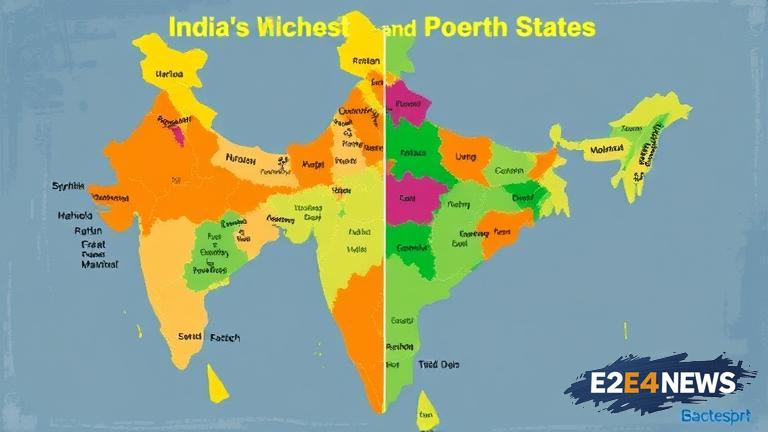India, a country with a diverse economy and a large population, has a significant wealth divide among its states. According to recent data, the richest states in India have a per capita income that is several times higher than that of the poorest states. The state of Goa, with a per capita income of over $3,400, is the richest state in India, followed closely by Delhi and Chandigarh. On the other hand, the state of Bihar, with a per capita income of just over $400, is the poorest state in India. Other poor states include Uttar Pradesh, Madhya Pradesh, and Jharkhand. The wealth divide among India’s states can be attributed to various factors, including differences in industrialization, infrastructure, and human development. States with well-developed infrastructure, such as roads, ports, and airports, tend to attract more investment and have higher economic growth rates. Additionally, states with high literacy rates and skilled workforces are more likely to have higher per capita incomes. The government of India has implemented various policies and programs aimed at reducing the wealth divide among states, including investments in infrastructure and human development. However, more needs to be done to address the significant disparities that exist. The wealth divide among India’s states has significant implications for the country’s overall economic growth and development. It also has social implications, as people living in poor states may have limited access to basic services such as healthcare and education. To address the wealth divide, it is essential to promote economic growth and development in the poorer states. This can be achieved through investments in infrastructure, human development, and industry. The government and private sector must work together to create jobs and opportunities in the poorer states, and to provide access to basic services such as healthcare and education. Furthermore, it is crucial to address the root causes of poverty, such as lack of education and skills, and to provide support to marginalized communities. The wealth divide among India’s states is a complex issue that requires a comprehensive and multi-faceted approach. By working together, it is possible to reduce the disparities and promote more inclusive and sustainable economic growth. The Indian government has also launched several initiatives to boost economic growth in the poorer states, including the ‘Make in India’ program and the ‘Smart Cities Mission’. These initiatives aim to promote investment, create jobs, and improve infrastructure in the poorer states. Moreover, the government has also increased funding for social welfare programs, such as the ‘Pradhan Mantri Jan Dhan Yojana’ and the ‘Pradhan Mantri Awas Yojana’, which aim to provide financial inclusion and affordable housing to the poor. Despite these efforts, the wealth divide among India’s states remains a significant challenge. The government and private sector must continue to work together to address this issue and promote more inclusive and sustainable economic growth. In conclusion, the wealth divide among India’s states is a complex issue that requires a comprehensive and multi-faceted approach. By promoting economic growth and development in the poorer states, and addressing the root causes of poverty, it is possible to reduce the disparities and promote more inclusive and sustainable economic growth. The government and private sector must work together to create jobs and opportunities in the poorer states, and to provide access to basic services such as healthcare and education. Only through a collective effort can India hope to reduce the wealth divide and promote a more prosperous and equitable future for all its citizens.





